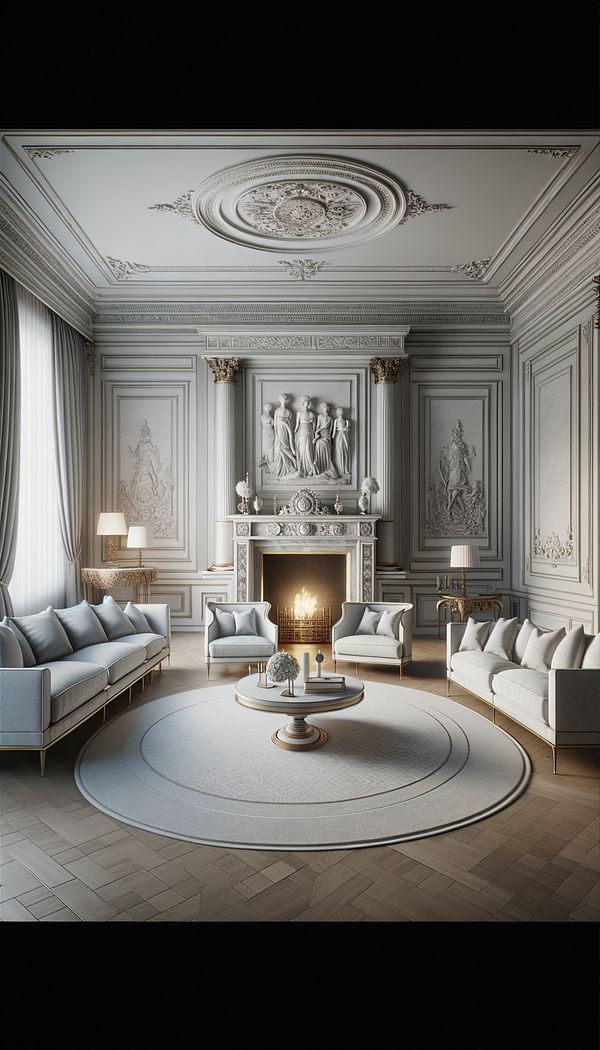What is Neoclassical?
Neoclassical is a design movement inspired by the classical art and culture of ancient Greece and Rome.
Description
Neoclassical design is a rich and timeless style that draws inspiration from the art, architecture, and culture of ancient Greece and Rome. It emerged in the mid-18th century and quickly became a prominent design movement, particularly in Europe and the United States. The hallmark of Neoclassical design is its emphasis on elegance, symmetry, and simplicity, contrasting with the elaborate ornamentation found in the preceding Baroque and Rococo periods.
The Neoclassical aesthetic is characterized by clean lines, minimal color schemes, and the use of classical architectural elements such as columns, pediments, and friezes. Furniture in the Neoclassical style often features straight lines, tapered legs, and motifs such as laurel wreaths and eagles, which were symbols of virtue and power in ancient cultures. Neoclassical interiors also make use of luxurious materials such as marble, silk, and gilt bronze, adding a touch of opulence to the restrained elegance of the space.
This design style is not limited to interiors; it has also influenced architecture, sculpture, and painting, where the same principles of symmetry, proportion, and classical motifs are evident. Neoclassical design encourages a harmonious balance between beauty and function, making it a versatile choice for modern living spaces.
Usage
In interior design, Neoclassical elements can be seen in everything from stately homes and government buildings to contemporary living spaces. It's often chosen for its ability to merge historical elegance with modern convenience, resulting in interiors that feel both grand and welcoming. Neoclassical furniture, such as claw-foot chairs and inlaid wood tables, are statement pieces that can add a sense of sophistication to any room. Additionally, incorporating architectural elements like columns or decorative mouldings can immediately give a space a Neoclassical flair.
FAQs
-
How does Neoclassical design differ from Classical design?
Neoclassical design draws heavily on Classical design but is differentiated by its emphasis on minimalism and symmetry. While both styles celebrate ancient Greek and Roman influences, Neoclassical design tends to be more restrained and less ornate than its Classical predecessor.
-
Can Neoclassical and modern design styles be combined?
Absolutely. Combining Neoclassical elements with modern design can create a sophisticated and balanced interior. This blend often involves incorporating classical motifs and furniture with sleek, contemporary decor to achieve a timeless yet modern look.
-
Is Neoclassical design only suitable for large, formal spaces?
Not at all. While Neoclassical design is often associated with grandeur, its principles of symmetry, simplicity, and elegance can be applied to spaces of any size. It can bring a touch of luxury and historical charm to even the smallest of spaces.
Practical Application
For those looking to incorporate elements of Neoclassical design into their homes, start with simple additions such as classical-inspired artwork, elegant lighting fixtures, or furniture with straight lines and tapered legs. Integrating sumptuous materials like silk drapes or a marble-top console table can also elevate a space to embody the Neoclassical aesthetic. Remember, balancing these historical elements with the functionality and comfort of modern living is key to achieving a cohesive Neoclassical design.
-
Architectural Elements199 articles
-
Design Styles478 articles
-
Materials & Textiles360 articles
-
Furniture Types599 articles
-
Decorative Objects240 articles
-
Grandfather ClockA Grandfather Clock is a tall, freestanding, weight-driven pendulum clock with a long case.
-
TaffetaTaffeta is a crisp, smooth, woven fabric known for its lustrous sheen and delicate texture.
-
Area RugAn area rug is a piece of fabric used as a floor covering in a specific area.
-
FixtureIn interior design, fixtures refer to items that are attached to the property in a way that makes them a permanent part of the space.
-
Asian Zen StyleAsian Zen Style is a tranquil and minimalist interior design approach influenced by the simplicity and natural elements of Zen philosophy.
